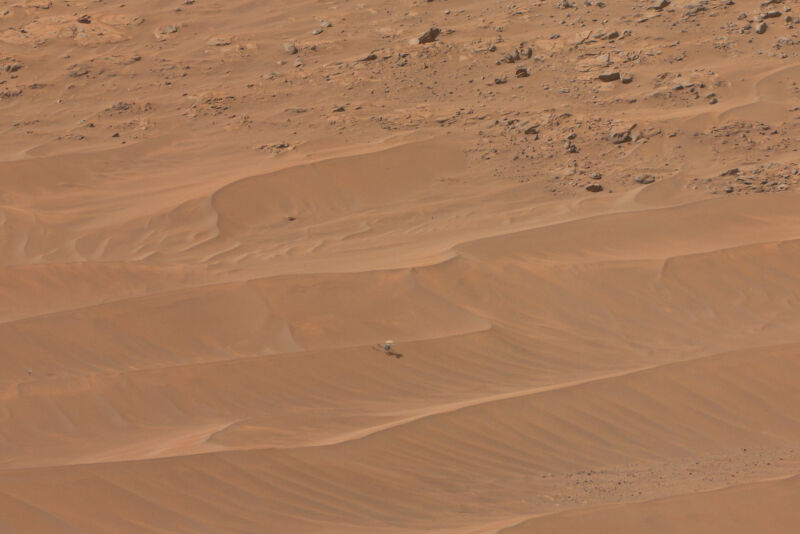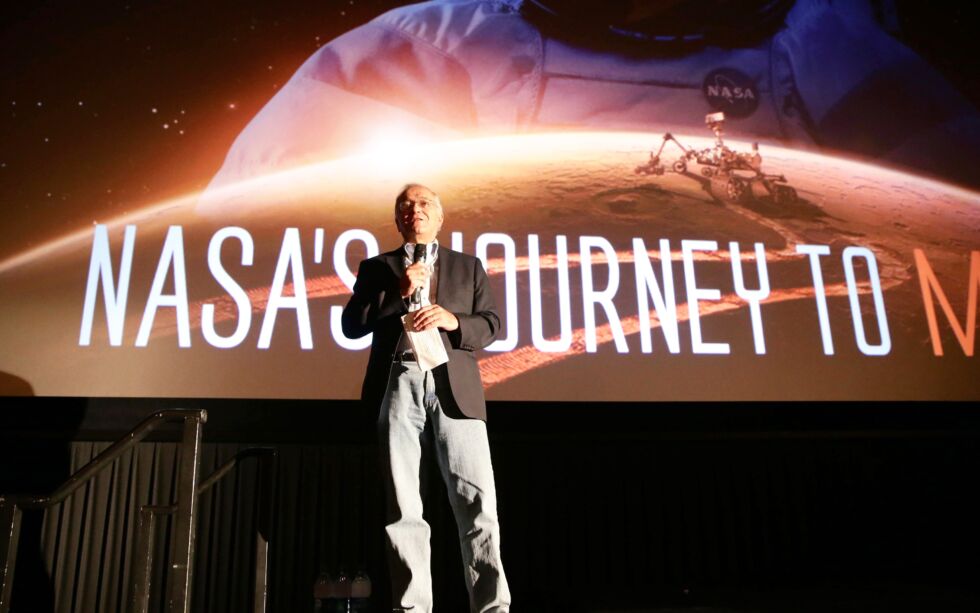
NASA/Simeon Schmauß
MiMi Aung could barely contain her excitement as she drove up Oak Grove Drive, the leafy thoroughfare leading to NASA’s Jet Propulsion Laboratory.
Aung had spent her formative years in Burma and Malaysia, two countries without a space program. A career in aerospace seemed beyond her reach. Yet here she was, at 22 years old, with a job interview to possibly work on the Deep Space Network. Aung dreamed of helping NASA intercept and amplify faint signals sent back to Earth from humanity’s farthest-flung spacecraft, including the Voyagers.
“I remember it like it was yesterday,” Aung said.
On that day in 1990, the math-loving engineer interviewed with prospective managers and visited facilities in the lab. It felt like home immediately. An energetic and enthusiastic person by nature, Aung spoke rapidly and asked a million questions. “You’re like a kid in a candy store,” one of the managers remarked. She was. Aung couldn’t help herself. More than anywhere in the world, this is where she wanted to be.
She got the job. Over the next quarter of a century, Aung would work on the Deep Space Network and various other programs. Eventually, she became a manager, supervising the Guidance, Navigation & Control systems that help fly spacecraft.
In 2014, she was given a choice. Aung could remain as a manager—a plum position in the hierarchy at the Jet Propulsion Laboratory (JPL)—or take over a fledgling project to develop a small helicopter that might one day fly on Mars.
Aung made the leap. She and a small team dove into the technical details of an almost impossible engineering challenge due to the exceptionally thin air on the red planet. But even as the team made progress, a formidable array of adversaries lined up against the program intended to hitch a ride on the Perseverance rover to Mars in 2020.
Again and again, at JPL, in the upper floors of NASA’s headquarters building in Washington, DC, and in the halls of Congress, these critics attempted to kill Ingenuity. And on multiple occasions, they almost succeeded.
This is the inside story of how Aung and a few champions of flying on Mars ultimately prevailed.
The origin of Ingenuity
The mad scientists at JPL had been dreaming of flying on Mars for a while. An engineer named Bob Balaram started toying with the idea in the 1990s, and he and a small team received a bit of money to put pen to paper on the concept. But before they could begin building anything, the funding dried up. The project was put on ice for more than a decade.
It received new life in 2013 when the longtime director of JPL, a Lebanon-born scientist and engineer named Charles Elachi, was touring the guidance and navigation division. The group had about 1,000 employees—one of whom, Aung, was its deputy manager. She was shepherding Elachi and a senior engineer at the lab, Rene Fredat, around. After visiting the drone lab, they boarded a small bus to move to the next stop.
“Why aren’t you flying drones or helicopters on Mars?” Elachi asked Fredat.
Neither he nor Aung had a good answer. So Elachi provided a bit of seed funding to Balaram and a few others to update their calculations from the 1990s and determine whether the miniaturization revolution spurred by mobile phone technology would make flying on Mars—where a vehicle had to be exceedingly light but capable of rotating its blades at thousands of revolutions per minute—possible. Aung was asked to support the project as a side job.

Eric Charbonneau/Getty Images
Eventually, it took more and more of her time. In September 2014, Aung had to decide whether to remain in a managerial role of a large division or take on the helicopter project. Even then, ill political winds were stirring around the idea, which would take away precious space on the Perseverance rover from scientific experiments.
“In hindsight, I realize how big of a thing that was to give up,” she said of the senior managerial role at JPL. “But at the time, I didn’t think twice about it. I felt like I had something to give.”
It was her big chance, so she grabbed it.

